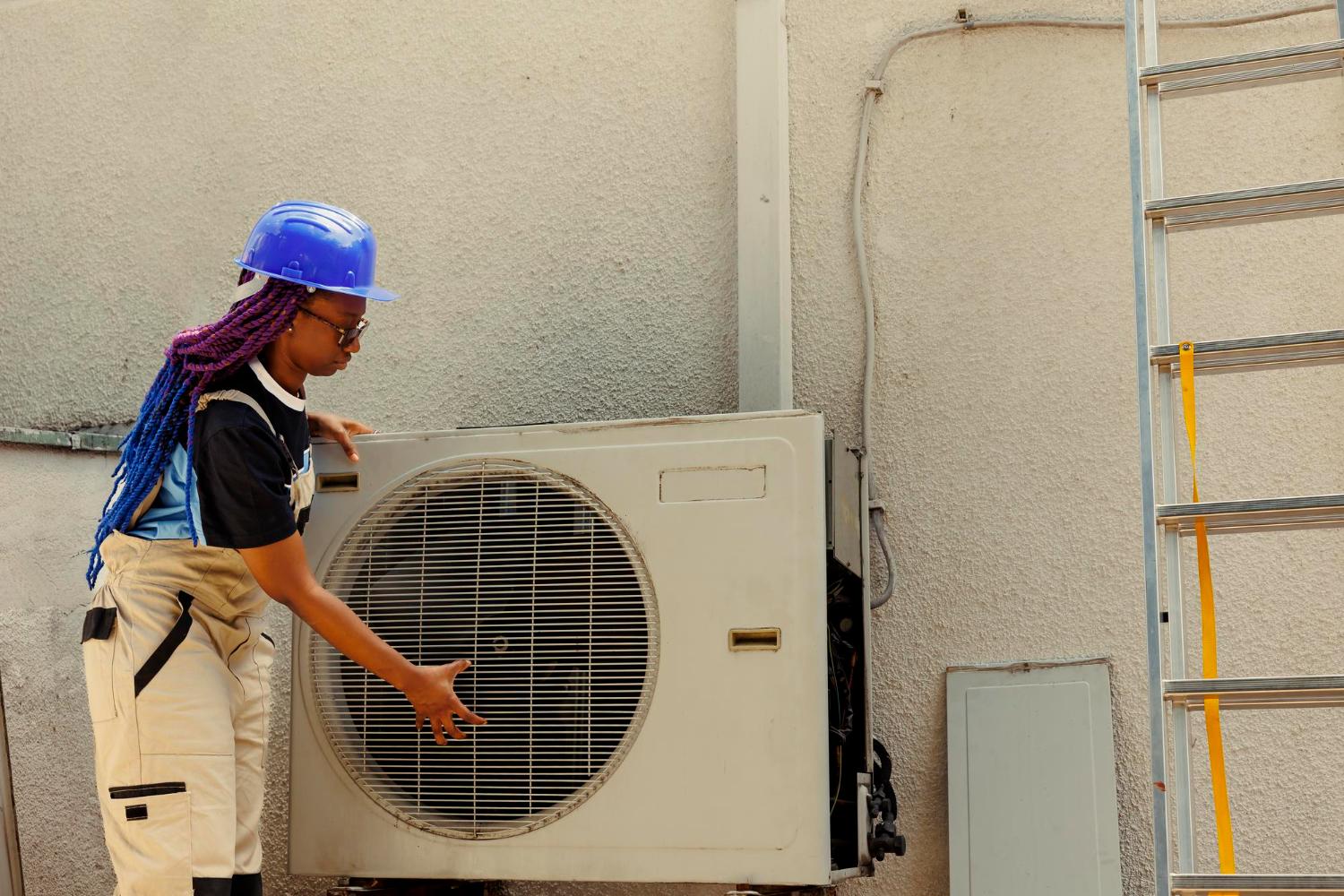
Keeping your HVAC system in good working order is essential for a comfortable home environment. HVAC systems control the heating, ventilation, and air conditioning in your home, making sure that you and your family stay comfortable year-round. However, these systems can sometimes run into problems. Knowing how to identify and fix common HVAC issues can save you time, money, and frustration.
Airflow Problems: Causes and Solutions
Airflow problems can make your home uncomfortable and put extra strain on your HVAC system. Identifying the root causes and knowing how to fix them can improve your system’s efficiency.
1. Dirty or Clogged Filters: One of the most common causes of airflow problems is dirty or clogged air filters. When filters are packed with dust and debris, air can’t flow freely through the system. This can make your HVAC unit work harder and reduce efficiency. To fix this, check your filters monthly and replace or clean them as needed.
2. Blocked Vents and Registers: If vents and registers are blocked by furniture or other objects, air can’t circulate properly. Make sure all vents and registers are clear of obstructions. This simple step can help improve airflow and overall comfort.
3. Leaky Ducts: Leaks in your ductwork can result in air escaping before it reaches your living spaces. This can lead to uneven heating or cooling and wasted energy. Inspect your ducts for visible leaks and seal them with duct tape or mastic sealant. You can also hire a professional to check for hidden leaks.
4. Closed Dampers: Sometimes, dampers in your duct system can be closed or partially closed. This restricts air movement and causes airflow problems. Check your dampers to ensure they are open and properly positioned to allow maximum airflow.
By identifying these common airflow issues and addressing them promptly, you can improve your HVAC system’s performance and maintain a comfortable home environment.
Thermostat Malfunctions: Troubleshooting Tips
A malfunctioning thermostat can make it difficult to keep your home comfortable. Here are some troubleshooting tips to help you get your thermostat working correctly.
1. Check the Power Source: Sometimes, the problem is as simple as a dead battery. Replace the batteries and see if the thermostat powers on. If it’s wired, make sure it’s properly connected to the electrical system. A loose or disconnected wire can prevent it from working.
2. Review the Settings: Ensure that the thermostat settings are correct. Check if it’s set to the right mode (heating or cooling) and that the temperature is set to a comfortable level. Sometimes, settings can be accidentally changed, causing the system to malfunction.
3. Clean the Thermostat: Dirt and dust can accumulate inside the thermostat, interfering with its performance. Open the thermostat cover and gently clean the components with a soft brush or cloth. Be careful not to damage any parts while cleaning.
4. Calibrate the Thermostat: Sometimes, a thermostat needs recalibration to ensure it reads the temperature accurately. Refer to your thermostat’s manual for instructions on how to calibrate it. If recalibration doesn’t solve the problem, the thermostat might be faulty.
5. Check for Software Updates: If you have a smart thermostat, software issues could be causing the malfunction. Check for any available firmware updates and install them. This can resolve bugs and improve performance.
By following these troubleshooting tips, you can address common thermostat issues and maintain a comfortable temperature in your home. Ensuring your thermostat functions correctly is key to an efficient and effective HVAC system.
Refrigerant Leaks: Detection and Fixes
Refrigerant leaks are a common HVAC problem that can affect your system’s performance. Here are some ways to detect and fix them.
Signs of a Refrigerant Leak:
1. Higher Energy Bills: If your energy bills are climbing without increased usage, a refrigerant leak might be the cause. Low refrigerant levels make the system work harder to cool your home.
2. Poor Cooling: When the refrigerant is low, your HVAC unit may struggle to maintain a cool temperature, resulting in uneven cooling.
3. Hissing Sounds: If you hear hissing sounds near your HVAC unit, it could indicate a refrigerant leak. This noise often comes from the refrigerant escaping from holes or cracks.
4. Ice on Evaporator Coils: Ice buildup on the evaporator coils is another sign of a refrigerant leak. The lack of refrigerant lowers the temperature to the point of freezing.
Fixing Refrigerant Leaks:
1. Inspect the Coils: Look at the evaporator and condenser coils for visible signs of leaks or corrosion. Small leaks might be fixed with a sealant, but larger issues will need professional repair.
2. Use a Leak Detector: Handheld refrigerant leak detectors can help pinpoint the exact location of the leak. This can make the repair process faster and more effective.
3. Seal Small Leaks: For minor leaks, a refrigerant sealant can be added to patch up the leakage points.
4. Professional Repair: For larger leaks or if you’re unsure how to handle the problem, call a professional HVAC technician. They can safely repair the leak and recharge the refrigerant to the appropriate levels.
By detecting and fixing refrigerant leaks promptly, you can ensure your HVAC system runs efficiently and keeps your home comfortable.
Strange Noises from Your HVAC System: What They Mean and How to Address Them
Strange noises from your HVAC system can be alarming. Identifying these sounds and their causes can help you address issues before they become serious problems.
Common Strange Noises and Their Meanings:
1. Banging or Thumping: These sounds might indicate loose or broken parts within the blower assembly or motor. The moving parts collide, causing the noise.
2. Squealing or Screeching: A high-pitched squeal often points to issues with the blower belt or motor bearings. The belt could be worn out or the bearings may need lubrication.
3. Rattling: Rattling sounds can suggest loose screws, panels, or other parts. It might also mean debris has entered the system, causing parts to vibrate.
4. Buzzing: Buzzing noises could indicate electrical problems, such as a failing motor or loose wiring connections. Inspecting the electrical components is necessary.
5. Humming: A low hum is normal, but if it becomes louder, it might indicate problems with the capacitor or motor.
Addressing These Noises:
1. Tighten Loose Parts: Inspect the system for any loose screws, panels, or parts and tighten them as needed. This can often resolve rattling and banging noises.
2. Replace Worn Belts: If you hear squealing, check the blower belt for wear and tear. Replace it if it’s old or damaged.
3. Lubricate Components: Components such as motor bearings might need lubrication. This can reduce squealing or screeching noises.
4. Inspect Electrical Connections: Buzzing or loud humming might require checking the electrical parts of the HVAC system. Ensure all wires are secure and that there are no signs of damage. For electrical issues, consider hiring a professional.
5. Clean the System: Remove any debris that might have entered the HVAC system. Keeping the system clean can prevent many noise-related issues.
By understanding what these sounds mean and how to address them, you can keep your HVAC system running smoothly and avoid costly repairs.
Conclusion
Understanding common HVAC problems and knowing how to fix them can help you maintain a comfortable and efficient home. Issues with airflow, thermostat malfunctions, refrigerant leaks, and strange noises can be troubling, but they are often manageable with a bit of knowledge and timely action. Regular maintenance and prompt repairs ensure your HVAC system remains reliable and effective throughout the year.
If you encounter any of these HVAC problems and need professional assistance, don’t hesitate to reach out. Total Air Masters is here to help with all your HVAC needs. Call us today to schedule a service and keep your home comfortable, no matter the season with our expert HVAC services!
